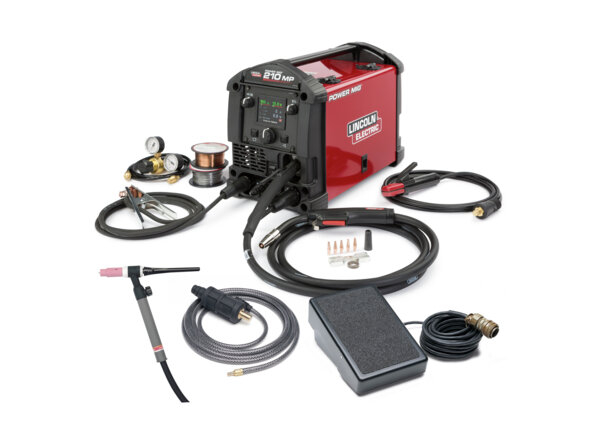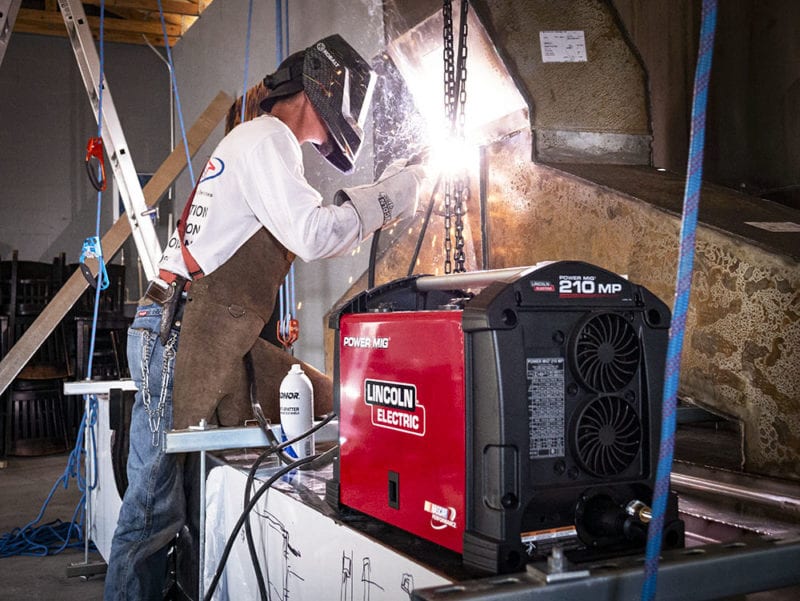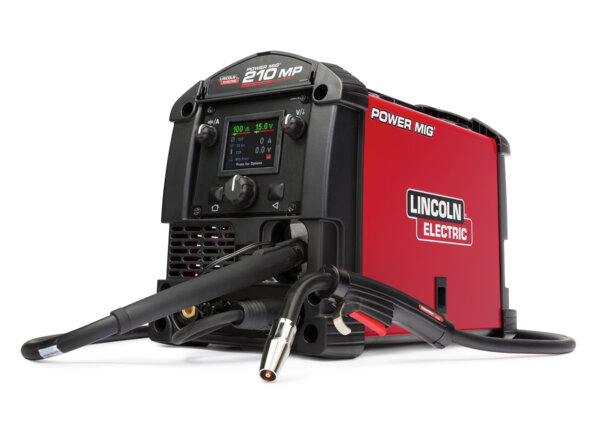I. POWER 210 MIG® 210 MP® multi-process welder
In the world of welding, versatility is the name of the game. Whether you’re a professional welder, a DIY enthusiast, or someone in between, having the right welding equipment can make all the difference in the success of your projects. That’s where the POWER 210 MIG® 210 MP® multi-process welder comes into play. In this comprehensive guide, we’ll delve into the world of this remarkable welding machine, exploring its features, capabilities, and the myriad of benefits it offers to welders of all levels.
II. Understanding the POWER MIG® 210 MP®
The POWER MIG® 210 MP® is not your average welding machine. It’s a versatile powerhouse that combines the capabilities of multiple welding processes in one compact unit. Here’s what sets it apart:
1. Multi-Process Capabilities: The standout feature of the POWER MIG® 210 MP® is its ability to perform MIG, TIG, and Stick welding. This means you can seamlessly switch between processes, making it suitable for a wide range of welding tasks.
2. All-in-One Design: With this welder, you don’t need separate machines for different welding techniques. It streamlines your workspace and eliminates the need for multiple units, saving you both space and money.
3. User-Friendly Interface: The user interface of the POWER MIG® 210 MP® is designed with simplicity in mind. Even if you’re new to welding, you’ll find it easy to navigate and set up for your specific welding needs.
III. Advantages of Multi-Process Welding
Now that we’ve covered what the POWER MIG® 210 MP® is, let’s explore why multi-process welding is such a game-changer:
1. Time Efficiency: When you have a multi-process welder, you can seamlessly switch between welding techniques without the downtime of setting up a different machine. This efficiency can significantly speed up your projects.
2. Space Savings: If you’re working in a small workshop or on job sites with limited space, the compact design of the POWER MIG® 210 MP® is a blessing. No need for multiple bulky welding machines cluttering your workspace.
3. Cost-Effective: Instead of investing in separate welding machines for different processes, you can save money by purchasing one multi-process welder. It’s a cost-effective solution, especially for hobbyists and small businesses.
4. Versatility: From welding automotive parts to fabricating metal structures, the POWER MIG® 210 MP® can handle a wide range of welding tasks. Its versatility ensures you’re prepared for various projects without switching equipment.
In the next part of our guide, we’ll walk you through the setup and usage of the POWER MIG® 210 MP®, ensuring you can harness its full potential for your welding endeavors.

Power MIG 210 MP TIG One-Pak is a multi-process, wire feeding welder. Flux Cored, MIG, TIG, Stick processes.
IV. Setting Up and Using the POWER MIG® 210 MP®
Setting up and using the POWER MIG® 210 MP® is a straightforward process, even if you’re new to welding. Here’s a step-by-step guide to help you get started:
1. Unboxing and Inspection:
-
- Carefully unpack your POWER MIG® 210 MP® and inspect it for any shipping damage.
- Ensure that all included components and accessories are present.
2. Safety First:
-
- Before you begin, put on appropriate welding safety gear, including a welding helmet, gloves, and safety glasses.
- Ensure your workspace is well-ventilated to disperse welding fumes.
3. Power Connection:
-
- Plug the welder into a suitable power source, following the manufacturer’s guidelines for voltage and amperage requirements.
- Make sure the power source is equipped with the correct plug or adapter.
4. Select Your Welding Process:
-
- Depending on your project, choose the welding process you want to use: MIG, TIG, or Stick welding.
- Refer to the user manual for guidance on selecting the appropriate settings.
5. Load Consumables:
-
- If you’re using MIG or TIG welding, load the corresponding wire or electrode and ensure it’s properly fed through the machine.
- Make sure the wire or electrode is compatible with the material you’re welding.
6. Adjust Settings:
-
- Set the voltage and wire feed speed (for MIG) or adjust the amperage (for Stick) based on your welding requirements.
- For TIG welding, set the appropriate tungsten electrode type and gas flow rate.
7. Welding Technique:
-
- Practice your welding technique on a scrap piece of the same material to fine-tune your settings and get a feel for the machine.
8. Welding Safety:
-
- Always wear appropriate welding safety gear, including a welding helmet with the right shade of lens.
- Ensure that there are no flammable materials near your welding area.
V. Welding Techniques and Best Practices
Now that you’ve set up your POWER MIG® 210 MP®, let’s dive into some welding techniques and best practices:
1. MIG Welding:
-
- Maintain a consistent travel speed and arc length.
- Ensure proper gun angle (typically 5-15 degrees in the direction of travel).
- Use the push or drag technique depending on your preference and the joint type.
2. TIG Welding:
-
- Control the heat input by adjusting the amperage.
- Maintain a stable arc length and keep the tungsten electrode sharp.
- Use the appropriate filler rod and ensure proper gas flow for shielding.
3. Stick Welding:
-
- Choose the correct electrode and amperage for the material and joint type.
- Maintain a short arc length for better control.
- Practice good rod angle and manipulation techniques.
4. Cleanliness Matters:
-
- Ensure that the metal surface is clean and free of rust, paint, and contaminants.
- Use a wire brush or grinder to prepare the welding area.
VI. Versatility in Action: Real-World Applications
The true beauty of the POWER MIG® 210 MP® lies in its ability to handle a wide array of welding projects. Here are some real-world applications where this versatile welder shines:
1. Automotive Repair and Fabrication:
-
- Repairing vehicle frames, exhaust systems, and body panels.
- Fabricating custom parts for automotive projects.
2. DIY Home Projects:
-
- Building metal furniture, gates, and fences.
- Crafting metal art and sculptures.
3. Construction and Structural Work:
-
- Welding structural steel for buildings and bridges.
- Joining metal components for construction projects.
4. Pipework and Plumbing:
-
- Welding pipes for plumbing and gas installations.
- Repairing and modifying metal pipes and fixtures.
5. Maintenance and Repairs:
-
- Performing on-site repairs for machinery and equipment.
- Welding agricultural machinery components.
By mastering the POWER MIG® 210 MP® and its various welding processes, you’ll have the versatility and capability needed to excel in a wide range of welding applications. In the next sections of our guide, we’ll cover maintenance and care tips, user reviews, and additional resources to help you make the most of your welding journey.
VII. Maintenance and Care
To ensure the longevity and optimal performance of your POWER MIG® 210 MP® multi-process welder, regular maintenance and care are essential. Here’s a comprehensive guide on how to maintain and care for your welding machine:
1. Routine Cleaning:
-
- Regularly clean the exterior of the welder using a soft cloth to remove dust and debris.
- Inspect the ventilation openings for blockages, and clear any obstructions to maintain proper cooling.
2. Wire Feeder Maintenance:
-
- If you’re using MIG welding, keep the wire feeder mechanism clean and free from dirt or rust.
- Ensure that the wire feeding mechanism is properly lubricated.
3. Electrode Holder and Ground Clamp:
-
- Clean the electrode holder and ground clamp regularly to ensure a good electrical connection.
- Check for any signs of wear and replace parts as needed.
4. Gas Regulator and Hoses:
-
- Inspect the gas regulator and hoses for leaks or damage.
- Replace damaged hoses or components promptly to maintain gas flow.
5. Electrical Connections:
-
- Periodically check all electrical connections for tightness and corrosion.
- Ensure that the power cord and plug are in good condition.
6. Calibration and Settings:
-
- Calibrate and verify the settings on your welder to ensure accuracy.
- Refer to the user manual for guidance on calibration procedures.
VIII. Comparisons and Alternatives
While the POWER MIG® 210 MP® is a versatile and capable multi-process welder, it’s important to consider your specific welding needs and compare it to other welding machines in the market. Here are some key points to consider when evaluating alternatives:
1. Welding Processes: Compare the welding processes offered by different machines and determine if they align with your project requirements.
2. Power and Amperage Range: Consider the power output and amperage range of alternative welders to ensure they meet the demands of your projects.
3. Portability and Size: Assess the size and portability of the welder, especially if you have limited workspace or need to transport it frequently.
4. Price and Value: Compare the price of the POWER MIG® 210 MP® to alternatives and evaluate the overall value in terms of features and capabilities.
5. User Reviews: Read user reviews and testimonials for different welding machines to gauge real-world performance and user satisfaction.
6. Manufacturer Reputation: Consider the reputation of the manufacturer, including warranty and customer support.
IX. Comparison Chart
Here is a comparison chart of the ten multi-process welders with the POWER MIG® 210 MP®:
X. Conclusion
In conclusion, the POWER MIG® 210 MP® multi-process welder is a versatile and powerful tool that can elevate your welding capabilities to new heights. Its ability to seamlessly switch between MIG, TIG, and Stick welding processes makes it a valuable addition to any workshop or job site. With proper setup, maintenance, and the application of best welding practices, you can unlock the full potential of this welding powerhouse.
As you embark on your welding journey, remember that versatility and adaptability are key, and the POWER MIG® 210 MP® delivers on both fronts. Whether you’re working on automotive projects, DIY home improvements, or tackling larger construction tasks, this welder is up to the challenge. Explore its capabilities, hone your skills, and let it become your trusted companion in the world of welding.

